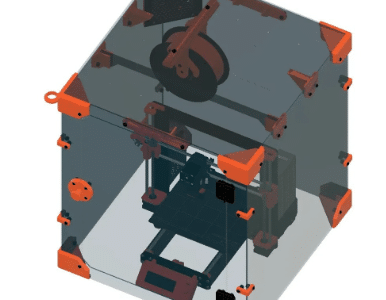
One of the essential components of the SDLC (Software Development Life Cycle) is software testing. Software testing is done to see if the development team actually constructed the program according to the client’s specifications and requirements.
Reputable software development firms all aim to deliver their customers high-quality software. Because of this, it’s crucial to verify the features, functionalities, and aspects of the user experience of the product before delivering it to the appropriate customer.
Software testing used to only be done manually, but nowadays, with so many tools and advanced technologies available, automated testing is being done.
It’s important to understand the differences between manual and automated testing before continuing with the article.
Manual testing: What is it?
Manual testing is the process of doing testing without the use of any tools. QA testers and QA analysts find faults and errors in software applications by creating test cases for the codes and employing the Testing in manual testing approach. The manual software testing procedure was often carried out by skilled software testers to verify each significant element of the software program.
Automation testing: What is it?
Testing professionals create test scripts to carry out the automated testing process.
When compared to manual testing, automation testing typically takes less time. In order to make a comparison between the actual and expected testing, automation testing mostly relies on pre-written test cases that run automatically. The testers employ pertinent automation tools for both software validation and the creation of test scripts.
Manual Testing Has Two Benefits
Under some circumstances, differences between expected and actual outputs, as well as open and concealed software faults, can be found using the manual testing method. Even with the newest technologies, automation testing may overlook it.
The two advantages of manual testing are as follows:
Human-Human Communication
Manual software testing can be the best choice when software development is just getting started. When testing manually, the testers engage with the program as if they were real users.
They can also quickly identify any serious UI problems and technical problems.
Flexible Adaptation
The ability to swiftly adjust to any emergency circumstance is provided by manual testing. If testing a new software feature or user interface suddenly becomes necessary, manual testing can be carried out with ease. Because you may carry out the testing procedure on a tight budget, manual testing can be useful in an emergency. In totality.
These are the main justifications for why businesses continue to use manual testing.
Two Benefits of Automated Testing
It is ideal to integrate automation testing, which is regarded as an advanced software testing component, in a project as many scenarios as possible. Automated testing is useful for assessing the overall software development process efficiency.
The two benefits of automated testing are:
Quicker Delivery of Results with Simple Reporting
Because software tools are used to do automation testing, it is much faster than the human technique. Automation testing can give you faster inputs when the same function needs to be evaluated with a variety of inputs and large data sets. The automatically created test reports will be emailed to you once the testing is complete.
Economical for Big Projects
Compared to manual testing, automated testing is more affordable for large-scale projects. Long-term ROI will please users even though automation testing necessitates an upfront expenditure. Automation testing can produce more accurate and technically sound results since it uses testing tools and scripts.
These two benefits are associated with automated testing.
Which testing method to use—manual or automated?
In the end, selecting which of the two testing procedures is most appropriate for your requirements will rely on a few of the elements stated below.
Project Dimensions and Cost
Automation testing is the ideal testing method when the software project has a big scope, is integrated with a good number of complicated features, and has a reasonable budget.
If there is insufficient funding and the project is limited in scope, manual testing may be chosen.
If you are conducting functional testing that is very repetitive, load testing, regression testing, performance testing, or both, then utilization automation testing is perfect for you.
It is strongly advised to use manual testing for exploratory and ad hoc testing.
Recognizing Serious User Problems
The automation testing approach might occasionally fail to identify issues such as genuine user difficulties because it mostly relies on test scripts with no human input. Conversely, manual quality assurance testers divide the application into multiple sections and then look for any unexpected situations that a user might run across.
Automated testing is not as reliable as manual testing for usability.
Code Alterations Frequently
If the code-changing operation is carried out too frequently, automation testing is preferable to manual testing. This kind of situation means that modifications to one module’s code also impact the other modules. Automation testing is hence more appropriate to test all the modules.
Process Time and Dependability
Because automated testing relies on tools and scripts, it is more reliable in this regard.
Automation testing processes information far more quickly than manual testing because the latter requires human labor, which slows down the process.
Testing in Sequence or Parallel
If you need to perform the test concurrently on several systems, automation testing can provide you with the results. Manual testing is the best option when you need to run the test iteratively over a set of tests.
Error testing, GUI, and stress
Automation testing is the only way to measure the load capacity, volume, and stress.
In summary
We may conclude from the debate between automation and manual testing that both are necessary since they both carry out a separate set of functions that are essential to software testing. Automation testing can assist with repetitive testing, but Manual testing in software testing is necessary for sophisticated testing objectives. It all depends on the project and the type of testing that is needed.



